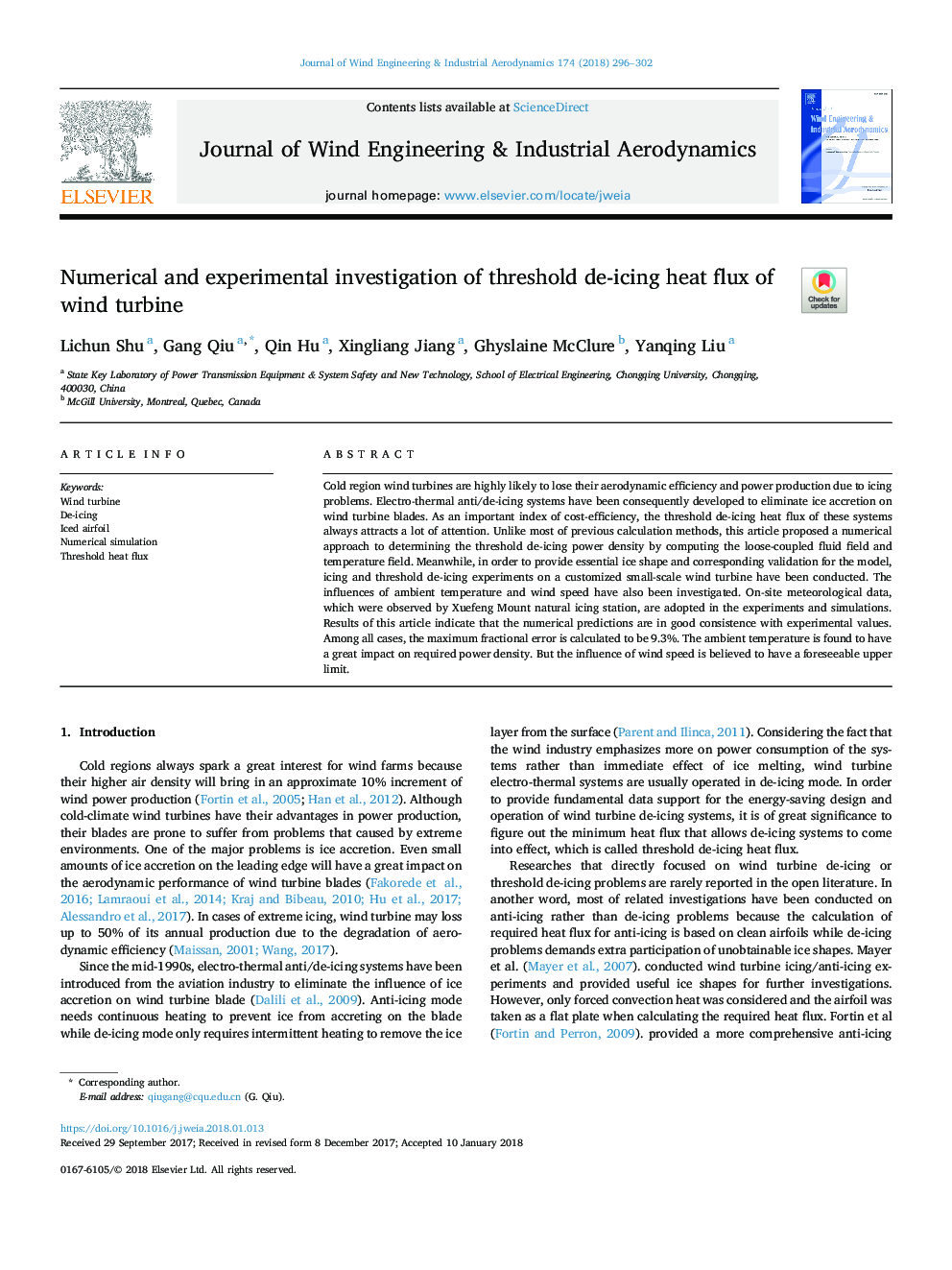| Article ID | Journal | Published Year | Pages | File Type |
|---|---|---|---|---|
| 6757092 | Journal of Wind Engineering and Industrial Aerodynamics | 2018 | 7 Pages |
Abstract
Cold region wind turbines are highly likely to lose their aerodynamic efficiency and power production due to icing problems. Electro-thermal anti/de-icing systems have been consequently developed to eliminate ice accretion on wind turbine blades. As an important index of cost-efficiency, the threshold de-icing heat flux of these systems always attracts a lot of attention. Unlike most of previous calculation methods, this article proposed a numerical approach to determining the threshold de-icing power density by computing the loose-coupled fluid field and temperature field. Meanwhile, in order to provide essential ice shape and corresponding validation for the model, icing and threshold de-icing experiments on a customized small-scale wind turbine have been conducted. The influences of ambient temperature and wind speed have also been investigated. On-site meteorological data, which were observed by Xuefeng Mount natural icing station, are adopted in the experiments and simulations. Results of this article indicate that the numerical predictions are in good consistence with experimental values. Among all cases, the maximum fractional error is calculated to be 9.3%. The ambient temperature is found to have a great impact on required power density. But the influence of wind speed is believed to have a foreseeable upper limit.
Related Topics
Physical Sciences and Engineering
Energy
Renewable Energy, Sustainability and the Environment
Authors
Lichun Shu, Gang Qiu, Qin Hu, Xingliang Jiang, Ghyslaine McClure, Yanqing Liu,
